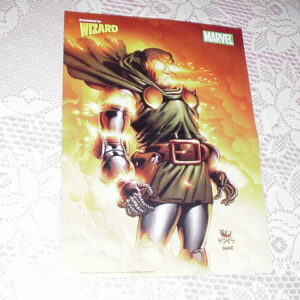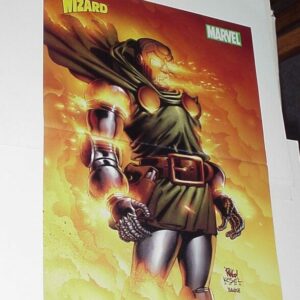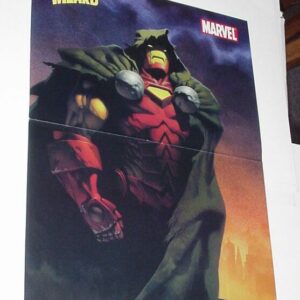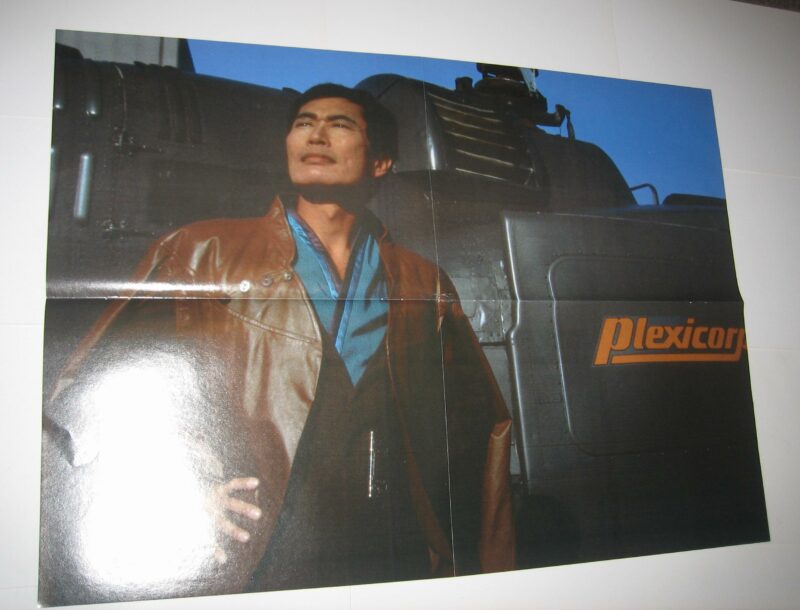Description
Star Trek IV: The Voyage Home is a 1986 American science fiction film released by Paramount Pictures. It is the fourth feature film in the film series and completes the story arc begun in The Wrath of Khan and continued in The Search for Spock. Intent on returning home to Earth to face trial for their crimes, the former crew of the USS Enterprise finds the planet in grave danger from an alien probe attempting to contact now-extinct humpback whales. The crew travel to Earth’s past to find whales who can answer the probe’s call.
After directing The Search for Spock, cast member Leonard Nimoy was asked to direct the next feature, and given greater freedom regarding the film’s content. Nimoy and producer Harve Bennett conceived a story with an environmental message and no clear-cut villain. Dissatisfied with the first screenplay produced by Steve Meerson and Peter Krikes, Paramount hired The Wrath of Khan writer and director Nicholas Meyer. Meyer and Bennett divided the story between them and wrote different parts of the script, requiring approval from Nimoy, lead actor William Shatner, and Paramount.
Principal photography commenced on February 24, 1986. Unlike previous Star Trek films, The Voyage Home was shot extensively on location; many real settings and buildings were used as stand-ins for scenes set around and in the city of San Francisco. Special effects firm Industrial Light & Magic (ILM) assisted in postproduction and the film’s special effects. Few of the humpback whales in the film were real: ILM devised full-size animatronics and small motorized models to stand in for the real creatures.
The Voyage Home premiered on November 26, 1986, in North America, becoming the top-grossing film in the weekend box office. The film’s humor and unconventional story were well received by critics, fans of the series and the general audience. It was financially successful, earning $133 million worldwide.
The film earned several awards and four Academy Award nominations for its cinematography and audio. It was dedicated to the crew of the Space Shuttle Challenger, which broke up 72 seconds after takeoff on the morning of January 28, 1986. Principal photography for The Voyage Home began four weeks after Challenger and her crew were lost. A sequel titled Star Trek V: The Final Frontier was released on June 9, 1989.
Despite Shatner’s doubts, Nimoy and Bennett selected a time travel story in which the Enterprise crew encounters a problem that could only be fixed by something only available in the present day (the Star Trek characters’ past). They considered ideas about violin makers and oil drillers, or a disease that had its cure destroyed with the rainforests. “But the depiction of thousands of sick and dying people seemed rather gruesome for our light-hearted film, and the thought of our crew taking a 600-year round trip just to bring back a snail darter wasn’t all that thrilling,” explained Nimoy. The director read a book on extinct animals and conceived the storyline that was eventually adopted. Nimoy hit upon the idea of humpback whales after talking with a friend—their song added mystery to the story, and their size added logistical challenges the heroes would have to overcome.
When Kirk and Spock are traveling on a public bus, they encounter a punk rocker blaring his music on a boom box, to the discomfort of everyone around him. Spock takes matters into his own hands and performs a Vulcan nerve pinch. Part of the inspiration for the scene came from Nimoy’s personal experiences with a similar character on the streets of New York; “I was struck by the arrogance of it, the aggressiveness of it, and I thought if I was Spock I’d pinch his brains out!” On learning about the scene, Kirk Thatcher, an associate producer on the film, convinced Nimoy to let him play the role; Thatcher shaved his hair into a mohawk and bought clothes to complete the part. Credited as “punk on bus”, Thatcher (along with sound designer Mark Mangini) also wrote and recorded “I Hate You”, the song in the scene, and it was his idea to have the punk—rendered unconscious by the pinch—hit the stereo and turn it off with his face.
Hikaru Sulu is a character in the Star Trek media franchise. Originally known simply as ‘Sulu’, he was portrayed by George Takei in the original Star Trek series. Sulu also appears in the animated Star Trek series, the first six Star Trek movies, one episode of Star Trek: Voyager, and in numerous books, comics, and video games. Sulu having the first name ‘Hikaru’ appeared in a 1981 novel, well over a decade after the original series had ended. John Cho assumed the role of the character in both the 2009 film Star Trek and its sequel, Star Trek Into Darkness.
Takei recalled Gene Roddenberry wanted the character to represent all of Asia, which symbolized the peace of the Trek universe in spite of the numerous wars in the continent. Roddenberry did not want a nationally specific surname, so he looked at a map and saw the Sulu Sea. “He thought, ‘Ah, the waters of that sea touch all shores’,” the actor recalled, “and that’s how my character came to have the name Sulu.”
Throughout the series, Sulu is shown having many interests and hobbies, including gymnastics, botany, fencing, and ancient weaponry. In the episode “The Naked Time” (1966), Spock observes that Sulu “is at heart a swashbuckler out of the 18th century”.
The character is promoted to lieutenant commander some time before Star Trek: The Motion Picture, and to full commander by the time of Star Trek II: The Wrath of Khan. During the first five Star Trek movies, he serves as helmsman aboard both the USS Enterprise and USS Enterprise-A. He is promoted to captain and given command of the USS Excelsior three years before the events of Star Trek VI: The Undiscovered Country.
Star Trek Generations introduces Hikaru’s daughter, Demora Sulu, whose origins are also depicted in Peter David’s non-canon novel The Captain’s Daughter.
George Hosato Takei (April 20, 1937) is an American actor, director and author, originally known for his role as Hikaru Sulu, helmsman of the USS Enterprise in the television series Star Trek. He also portrayed the character in six Star Trek feature films and in an episode of Star Trek: Voyager.
Takei’s involvement in social media has brought him new fame. He currently has over 7 million likes since joining Facebook in 2011, frequently sharing photos with original humorous commentary.
He is a proponent of LGBT rights and active in state and local politics apart from his continued acting career. He has won several awards and accolades in his work on human rights and Japanese–American relations, including his work with the Japanese American National Museum.
In 1942, the Takei family was forced to live in the horse stables of Santa Anita Park before being sent to the Rohwer War Relocation Center for internment in Rohwer, Arkansas. The family was later transferred to the Tule Lake War Relocation Center in California. He and his family returned to Los Angeles at the end of World War II.
It was intended that Sulu’s role be expanded in the second season, but Takei’s role as Captain Nim, a South Vietnamese Army officer, alongside John Wayne’s character in The Green Berets, meant that he only appeared in half the season. Walter Koenig as Pavel Chekov substituted for him in the other episodes. When Takei returned, the two men had to share a dressing room and a single episode script. Takei admitted in an interview that he initially felt threatened by Koenig’s presence, but later grew to be friends with him as the image of the officers sharing the ship’s helm panel side-by-side became iconic.
Takei has since appeared in numerous TV and film productions, reprising as the voice of Sulu in Star Trek: The Animated Series from 1973-’74, including the first six Star Trek motion pictures, and today he is a regular on the science fiction convention circuit throughout the world. He has also acted and provided voice acting for several science fiction computer games, including Freelancer and numerous Star Trek games. In 1996, in honor of the 30th anniversary of Star Trek, he reprised his role as Captain Hikaru Sulu on an episode of Star Trek: Voyager, appearing as a memory of Lt. Tuvok, who served on the USS Excelsior under Sulu, during the events of Star Trek VI: The Undiscovered Country.
Takei is one of a number of Star Trek supporting cast members whose difficulties with William Shatner have become public.
In the summer of 2007, Takei reprised his role of Sulu in the fan-made Internet based series Star Trek New Voyages: Phase II.
Near mint condition.
Related products
-


Doctor Doom Poster # 3 Triumphant by Mike Wieringo Fantastic Four 67
$34.99 Add to cart -


Iron Man Poster # 5 by Kev Walker Iron Doom Exiles 23 Cover
$29.99 Add to cart -


Captain America Poster # 9 In Chains by John Cassaday Issue 8
$29.99 Add to cart -


Elektra Poster # 2 by Rodolfo Migliari Daredevil Thunderbolts
$29.99 Add to cart



